Saturday
Saturday we headed out to a market in a town close to Kuranda, turned out we had some misleading information and the market was not on that day
. Ed talked to the local mobile coffee shop and we got some great recommendations for local attractions.
First off to a another market in Malinda, a town about 40 minutes away. Lots of local produce, crafts and etc. One unexpected treasure: black sapote aka chocoloate pudding sapote
BLACK SAPOTE: a species of persimmon native to eastern Mexico and Central America. See images.
Fruit is the size of bocchi ball with an inedible skin that turns from olive to a deep yellow-green when ripe. Pulp is white and inedible when unripe but assumes a flavor, color and texture often likened to chocolate pudding when ripe.
Yup, it does taste like a very lightly sweetened chocolate pudding right down to the texture
.
Unfortunately, ripened fruit is very soft (sorta like a bag of jello) and not really suitable for export.
....then we were off to Herberton known this time of the year for the beauty of its flowering jacuranda trees. The village did not diasappoint. The glorious purple flowered trees were scattered around the village and lined short sections of streets in some parts of town.
....next stop HERBERTON HISTORICAL VILLAGE. Now this was a treat
Located in the Atherton Tablelands, Herberton is the oldest town on the Tablelands. Etablished in the 1880s during a tin mining boom
. The town itself has retained a charming street scape with old period buildings housing modern business with facades true to the 1800s.
Just outside of the town itself, a 16 acre Historical Village has been reconstructed. The 50 plus restored period buildings relocated to this site along with relevant period artifiacts were a true delight. We spent hours exploring and imagining ourselves in that time period.
The tea room (located in restored cafe) was just as delightful. Stopped there for both tea (aka coffee) and lunch.
Now this was unexpected - an entire shelf of GOLLYWOG dolls for sale. We were somewhat aghast although acknowledging they are a part of the history of the times. Reader Alert! Unless you want to read a lot about this topic you can skip to the second last paragraph in this section and get the Readers Digest version
.
This, of course, launched me into research mode. Did you know WOG means:
Origin of the term is unclear but here are some of theories:
-first noted by lexicographer F.C. Bowen in 1929, in his Sea Slang: a dictionary of the old-timers’ expressions and epithets, where he defines coonwogs as "lower class Babu shipping clerks on the Indian coast."
-many dictionaries say "wog" derives from the golliwogg, a blackface minstrel doll character from a children's book published in 1895, or from pollywog, a maritime term for someone who has not crossed the equator.
-acronym for "Wily?/Worthy? Oriental Gentleman",
-acronym for "Working On Government Service"
Recently, there was even a popular stage show, Wogs Out of Work, here in Australia
. Show parodied Greek life and was followed up by a TV series, Acropolis Now. A film, Wog Boy, stars Melbourne comedian Nick Giannopoulos as a dole bludger. Soccer is sometimes known as "wogball" in Sydney.
now onto GOLLIWOG...
"Golliwogg is a type of a rag doll. It is also known as golliwog or golly. It is made from black fabric and has black eyes bordered with white, red lips with white teeth and frizzy hair.
Inspiration for gollywogg dolls came from Florence Kate Upton who was born in 1873 in Flushing, New York and was daughter of English parents. Her father died when she was 14 and she moved back to England. To be able to afford art school she illustrated book “The Adventures of Two Dutch Dolls and a Golliwog”. It was a children’s book which had a character by the name of Golliwogg who looked scary but was a positive character
. Inspired by blackface minstrels he had black skin, red lips and frizzy hair and was dressed in traditional minstrel cloth. Golliwogg proved very popular and book sold very well in England along with its sequels. Similar dolls and images started carrying name gollywog because of that popularity and because Florence did not patent the name. This made the doll a popular children’s toy during large part of 20th century. Its fame was so wide that it spread to advertising and other selling items like children's china and other toys, ladies' perfume, and jewelry. James Robertson & Sons, British jam factory, used Gollywog as a mascot from 1910 until 2001. “Blackjack” - aniseed candy made in United Kingdom used gollywog’s face from 1920s until 1980s.
One theory of the origin of the name “Golliwogg” says that while British soldiers held Egypt in the second half of the 19th century they had Egyptian laborers that worked for them. Workers wore insignia W.O.G.S. on their armbands which meant “Working on Government Service”. British troops spoke of them as “ghouls” - which is an Arabic word for a desert ghost. Egyptian children played with black dolls which they would sometimes give to British soldiers or they would buy dolls from children. That dolls were later called “Ghuliwogs” and later “Golliwogg”. How much truth is in this theory - it is not known.
UNEXPECTED
Saturday, October 18, 2014
 Herberton, Queensland, Australia
Herberton, Queensland, Australia
Other Entries
-
3Hong Kong
Oct 0117 days prior Kowloon, Hong Kongphoto_camera1videocam 0comment 0
Kowloon, Hong Kongphoto_camera1videocam 0comment 0 -
4Sheer indulgence
Oct 0117 days prior Kowloon, Hong Kongphoto_camera1videocam 0comment 1
Kowloon, Hong Kongphoto_camera1videocam 0comment 1 -
5Do you have the time?
Oct 0117 days prior Sydney, Australiaphoto_camera1videocam 0comment 1
Sydney, Australiaphoto_camera1videocam 0comment 1 -
6Aussie word of the day: Stickybeak
Oct 0216 days prior Sydney, Australiaphoto_camera0videocam 0comment 0
Sydney, Australiaphoto_camera0videocam 0comment 0 -
7Now this is a transit system
Oct 0315 days prior Manly, Australiaphoto_camera1videocam 0comment 0
Manly, Australiaphoto_camera1videocam 0comment 0 -
8Our Manly home
Oct 0315 days prior Manly, Australiaphoto_camera2videocam 0comment 1
Manly, Australiaphoto_camera2videocam 0comment 1 -
9Manly wanderings
Oct 0414 days prior Manly, Australiaphoto_camera4videocam 0comment 1
Manly, Australiaphoto_camera4videocam 0comment 1 -
10Sydney
Oct 0414 days prior Sydney, Australiaphoto_camera4videocam 0comment 2
Sydney, Australiaphoto_camera4videocam 0comment 2 -
11Blue Mountains tour: park, plus
Oct 0513 days prior Sydney, Australiaphoto_camera2videocam 0comment 0
Sydney, Australiaphoto_camera2videocam 0comment 0 -
12DAY OF WINE, COFFEE & TERMITES
Oct 0810 days prior Kuranda, Australiaphoto_camera6videocam 0comment 1
Kuranda, Australiaphoto_camera6videocam 0comment 1 -
13Rainforest House
Oct 126 days prior Kuranda, Australiaphoto_camera5videocam 0comment 5
Kuranda, Australiaphoto_camera5videocam 0comment 5 -
14Stickybeaking in Kuranda
Oct 144 days prior Kuranda, Australiaphoto_camera9videocam 0comment 0
Kuranda, Australiaphoto_camera9videocam 0comment 0 -
15Aussie word of the day: SHIRTFRONT
Oct 153 days prior Kuranda, Australiaphoto_camera0videocam 0comment 0
Kuranda, Australiaphoto_camera0videocam 0comment 0 -
16TERMITES
Oct 162 days prior Kuranda, Australiaphoto_camera1videocam 0comment 0
Kuranda, Australiaphoto_camera1videocam 0comment 0 -
17NATURE NOTES:
Oct 162 days prior Kuranda, Australiaphoto_camera3videocam 0comment 1
Kuranda, Australiaphoto_camera3videocam 0comment 1 -
18Temple & mangroves
Oct 162 days prior Cairns, Australiaphoto_camera7videocam 0comment 0
Cairns, Australiaphoto_camera7videocam 0comment 0 -
19MEANDERS CONTINUE:
Oct 18earlier that day Kuranda, Australiaphoto_camera8videocam 0comment 0
Kuranda, Australiaphoto_camera8videocam 0comment 0 -
20UNEXPECTED
Oct 18 Herberton, Australiaphoto_camera17videocam 0comment 1
Herberton, Australiaphoto_camera17videocam 0comment 1 -
21AUSSIE WORD OF THE DAY: FOSSICKING
Oct 191 day later Kuranda, Australiaphoto_camera0videocam 0comment 0
Kuranda, Australiaphoto_camera0videocam 0comment 0 -
22Aussie word of the day: DAMPER
Oct 224 days later Kuranda, Australiaphoto_camera1videocam 0comment 0
Kuranda, Australiaphoto_camera1videocam 0comment 0 -
23Casso-wary!!
Oct 235 days later Daintree, Australiaphoto_camera12videocam 0comment 0
Daintree, Australiaphoto_camera12videocam 0comment 0 -
24MOSSMAN GORGE & DAINTREE
Oct 235 days later Daintree, Australiaphoto_camera11videocam 0comment 0
Daintree, Australiaphoto_camera11videocam 0comment 0 -
25RABBITOHS
Oct 246 days later Kuranda, Australiaphoto_camera3videocam 0comment 0
Kuranda, Australiaphoto_camera3videocam 0comment 0 -
26Like
Oct 246 days later Kuranda, Australiaphoto_camera1videocam 0comment 2
Kuranda, Australiaphoto_camera1videocam 0comment 2 -
27Great Barrier Reef - Quicksilver Wave Piercer
Oct 2810 days later Port Douglas, Australiaphoto_camera7videocam 0comment 0
Port Douglas, Australiaphoto_camera7videocam 0comment 0 -
28Willie Gordon & "Gangurru" carnage
Oct 3113 days later Cooktown, Australiaphoto_camera14videocam 0comment 0
Cooktown, Australiaphoto_camera14videocam 0comment 0 -
29Split Rock
Nov 0114 days later Cooktown, Australiaphoto_camera9videocam 0comment 0
Cooktown, Australiaphoto_camera9videocam 0comment 0 -
30Heron Island - a misnomer
Nov 1023 days later Heron Island, Australiaphoto_camera28videocam 0comment 1
Heron Island, Australiaphoto_camera28videocam 0comment 1 -
31Atherton Tableland
Dec 2770 days later Atherton, Australiaphoto_camera34videocam 0comment 0
Atherton, Australiaphoto_camera34videocam 0comment 0 -
32Heat, Lava Tubes & Emus
Dec 2770 days later Cairns, Australiaphoto_camera24videocam 0comment 0
Cairns, Australiaphoto_camera24videocam 0comment 0
Comments
2025-05-23
Comment code: Ask author if the code is blank

 Herberton, Queensland, Australia
Herberton, Queensland, Australia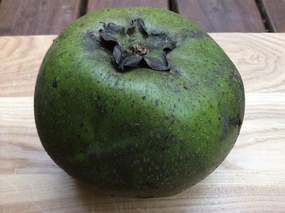
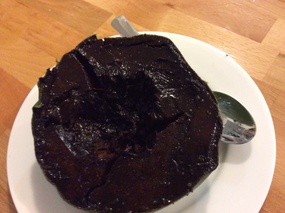

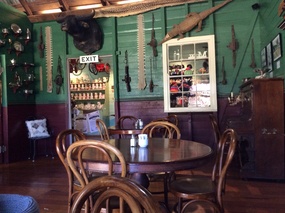
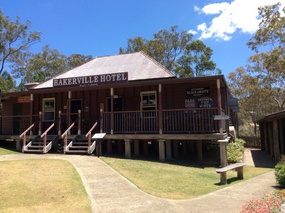
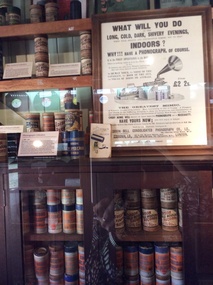


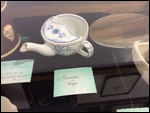
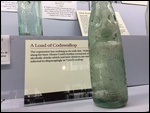

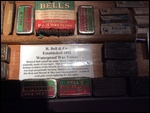
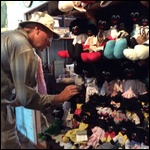

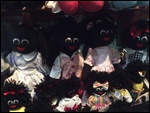
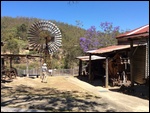

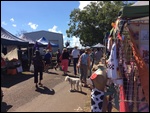
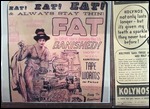
Meg
2014-10-23
What could be better a fruit that is a chocolate confection...hurray...not sure about Mango wine